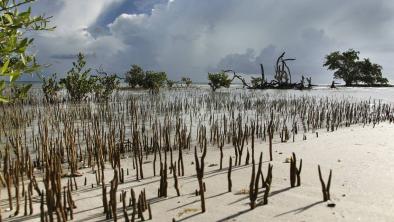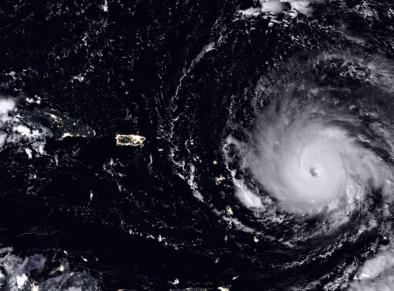Science Source
Intensification and poleward shift of subtropical western boundary currents in a warming climate
“Our analysis shows that the surface temperature of the boundary currents has increased two to three times faster than in other oceanic regions...In addition, the currents release at least 20 percent more heat than they did half a century ago, which leads to the conclusion that the temperature of the water has risen, its flow speed has increased and the currents thus transfer more water and also more heat from the tropics towards the pole.”
Hu Yang, a climate scientist at the Alfred Wegener Institute (AWI) and co-author of the study
- Observes a significant increase in sea surface temperature (SST) is observed over the mid-latitude western boundary currents (WBCs) during the past century
- States, however, that the mechanism for this phenomenon remains poorly understood due to limited observations
- Analyzes several coupled parameters (i.e., sea surface temperature (SST), ocean surface heat fluxes, ocean water velocity, ocean surface winds and sea level pressure (SLP)) to identify the dynamic changes of the WBCs
- Uses three types of independent data sets, including reanalysis products, satellite-blended observations and climate model outputs from the fifth phase of the Climate Model Intercomparison Project (CMIP5)
- Finds—based on these broad ranges of data—that the WBCs (except the Gulf Stream) are intensifying and shifting toward the poles as long-term effects of global warming
- Proposes that an intensification and poleward shift of near-surface ocean winds, attributed to positive annular mode-like trends, are to be the forcing of such dynamic changes
- Expects in contrast to the other WBCs, that the Gulf Stream is to be weaker under global warming, which is most likely related to a weakening of the Atlantic Meridional Overturning Circulation (AMOC)
- Notices that the natural variations of WBCs might conceal the long-term effect of global warming in the available observational data sets, especially over the Northern Hemisphere
- States long-term observations or proxy data are necessary to further evaluate the dynamics of the WBCs
Related Content
Science Source
| Geophysical Research Letters
Increasing Magnitude of Hurricane Rapid Intensification in the Central and Eastern Tropical Atlantic
Karthik Balaguru, Gregory R. Foltz, L. Ruby Leung
Headline

Apr 19, 2018 | Miami Herald
NASA team finds massive Everglades mangrove damage from Irma. Can it recover?
Headline

Mar 22, 2018 | Reuters
Last three years hottest on record, severe weather hits 2018: U.N.
Headline

Jan 23, 2018 | Nature
Atlantic hurricanes' rapid growth spurts are intensifying


